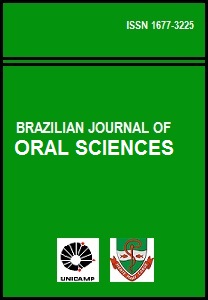Abstract
Post-poliomyelitis syndrome (PPS) is characterized by the delayed appearance of new neuromuscular symptoms in patients several years after their acute poliomyelitis paralysis. Clinical features of PPS include fatigue, joint and muscle pain, new muscular weakness and bulbar symptoms. The diagnosis is essentially clinical after excluding other neurological, orthopedic or rheumatologic problems. Temporomandibular disorders (TMD) are usually diagnosed by means of comprehensive review of patient history and clinical examination and the symptoms are pain/ discomfort in the jaw, mainly in the region of the temporomandibular joints (TMJs) and/or masticatory muscles, limitation of mandibular function and/or TMJ sounds. In the same way as PPS, the diagnosis of TMD is challenging. This study reports the case of a patient that presented the symptoms of both conditions in the stomatognathic system, and discusses how to achieve the differential diagnosis for proper management of the cases.
This work is licensed under a Creative Commons Attribution 4.0 International License.
Copyright (c) 2015 Gustavo Augusto Seabra Barbosa, Maria Helena de Siqueira Torres Morais
Downloads
Download data is not yet available.

